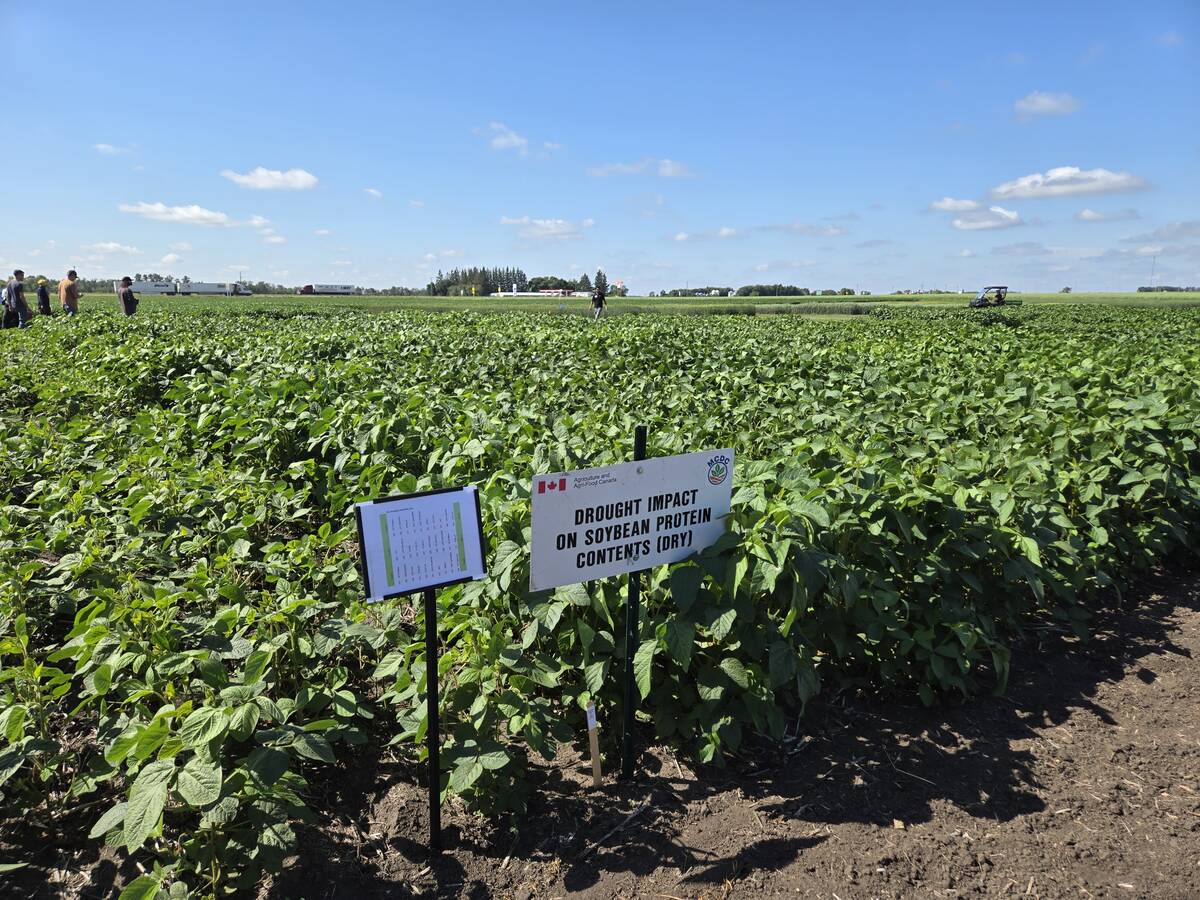How do you spell high yielding wheat?
Try this: BW252.
A newly registered hard red spring wheat going by that name has a bin-busting 25 percent yield advantage over Neepawa and 14 percent over AC Barrie.
“The high yield is certainly going to catch people’s attention,” said Agriculture Canada wheat breeder Fred Townley-Smith, who developed the new variety at the department’s cereal research centre in Winnipeg.
But farmers will have to be patient. It won’t be widely available on a commercial basis until the 2002 crop year.
Read Also

Carberry field day looks for agriculture solutions
Manitoba farmers explored research solutions for resilient crops, perpetual agronomic issues and new kinds of agricultural products at a field day at the Manitoba Crop Diversification Centre in Carberry on Aug. 6.
Industry officials say the new variety, which also boasts strong straw, good resistance to lodging, sprouting and current races of rust, should within a few years shoulder aside AC Barrie as the first choice of prairie farmers.
“None of our varieties is without warts, but it certainly looks to me to be quite attractive, with the high yield and straw strength that it has,” said Townley-Smith.
The wart in this case comes in the form of poor flour color, an important factor for many customers.
“It will work well for the majority of customers,” said Graham Worden, senior manager of market development for the Canadian Wheat Board. “But there may be some that will be looking for something a bit different.”
He added the poor flour color is balanced to some degree by the new variety’s high milling yield.
A kernel of wheat typically yields about 75 percent flour. Trying to get more than that results in particles of bran getting into the flour, making it darker and less attractive. Many millers stop at around 73 percent to avoid problems.
Since BW252 has a high extraction rate of 76 or 77 percent, millers can cut back to prevent discoloration but still end up with a yield of around 75 percent.
It’s also possible to blend with other lighter-floured varieties to produce an acceptable end-product, Worden said.
Despite those concerns, and after some intense discussion at its recent annual meeting in Edmonton, the Prairie Registration Recommending Committee voted in favor of BW252 by a margin of 46 to nine.
“The committee voted to support it, so I guess the committee felt it wasn’t a fatal flaw,” said Townley-Smith.














